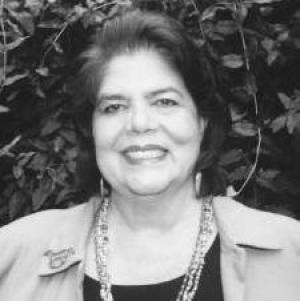Wilma Mankiller: Cherokee Leader

Students will use the information they learned from reading the short biography of Wilma Mankiller, watching the video, Bell Water Project, and excerpts from her auto-biography, Mankiller: A Chief and Her People to discuss what makes someone an effective leader. Lesson will culminate in students brainstorming community based self-help projects that the class could organize at their school.
Two 45 minute class periods
- Students will evaluate the characteristics associated with effective leaders
- Students will reach a conclusion about whether effective leaders must understand the culture and circumstances of the people they are attempting to lead
- Students will apply their conclusions to their own class and/or school by considering class and/or school improvement projects they believe correspond to the needs of the class and/or school
- Short biography of Wilma Mankiller (Link)
- Video clip of Bell Water Project
- Primary source: Excerpt from Mankiller: A Chief and Her People
- Excerpts can be found on page 4-5
- Class discussion
- What are the characteristics of a good leader?
- Students individually read the Wilma Mankiller biography and answer accompanying questions
- Identify character traits of Wilma Mankiller that made her an effective leader.
- Name three obstacles that Wilma Mankiller had to overcome in her life.
- Identify sources of strength Wilma Mankiller used to overcome those obstacles.
- Students discuss and compare their answers with a partner
Next, show video of Bell Water Project
Divide the students into small groups, ideally 4-5 students per group. Students will read selected excerpts from Mankiller: A Chief and Her People and, working in their assigned groups, will discuss and answer the assigned questions.
- How did Mankiller use her rehabilitation time to her best advantage?
- How did she envision using the “good mind approach” in her work?”
- Mankiller seems to suggest that she was less ambitious when she returned to work than she previously had been. Does that surprise you? Why or why not?
- How did Mankiller’s leadership style reflect both the needs and the attitudes she observed in the Cherokee culture?
- What problems do you think Mankiller had to overcome while recruiting volunteers for the Bell project?
- Predict how you think the people of Bell felt about their community after the project was completed.
Working in their groups, students will develop a “Shark Tank” proposal—a three minute proposal for a school based community project that identifies and need and would improve their school in some way
- As a class, students will discuss and reach a consensus on which project would be the best to pursue as a class project or school-wide project
- Teachers can assign the readings for homework
- Informal assessment of group discussions of questions accompanying excerpts from Mankiller: A Chief and Her People
- Formal assessment—Shark Tank PowerPoint presentation for class/school project
- Exit slip—review the class discussion that began the lesson: What are the characteristics of a good leader? Have the students identify one leadership action or idea of Wilma Mankiller’s that matches a characteristic identified in the class discussion.
- Mankiller: A Chief and Her People by Wilma Mankiller and Michael Wallis, 1993
From the C3 Framework
|
|
